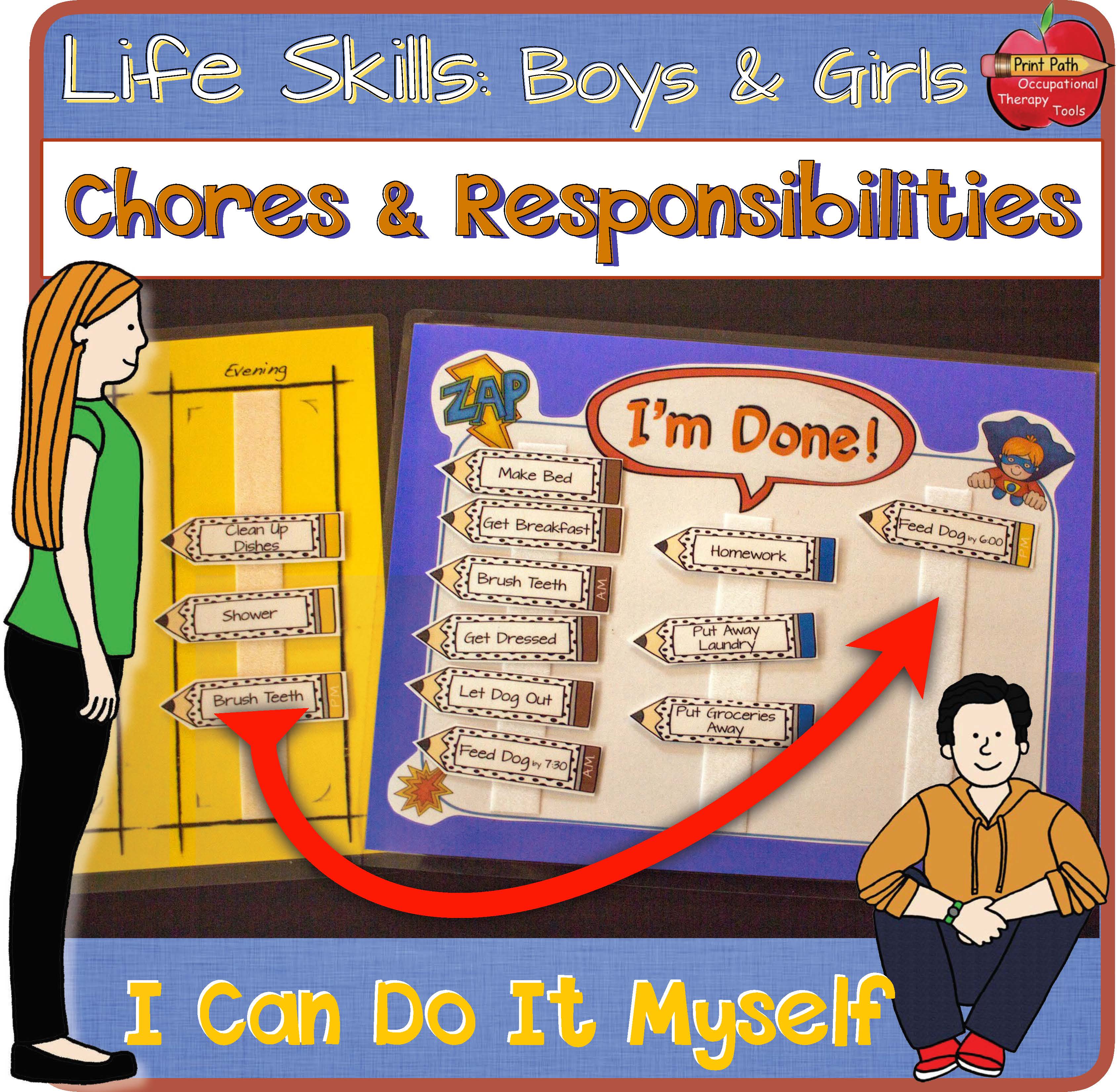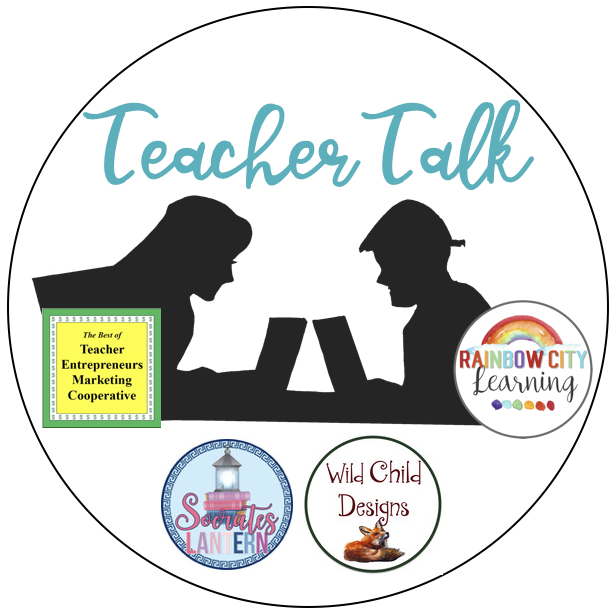- Motivating Your Child to Do Chores
- Start slowly. Let your child know what your expectations for chores are ahead of time. Children need to know that their help is needed.
- “Personal responsibilities” include chores like cleaning your room, picking up your dishes after you eat, or doing your homework.
- Other chores like taking out the trash, putting away groceries, or sweeping the kitchen floor are what I refer to as “family work.”
- If your child is one to question “Why do I have to…?”, it is helpful to be able to describe the work as either a “personal responsibility” or “family work.”
- Use a structured system of expectations and consider whether using a visual schedule is right for your child. You may want to use either a picture-based or a word-based system.
- Start new chores by working together. Your expectations can gradually increase as the child gains skills, confidence, and ease at performing a chore.
- Praise, rewards, and contingencies can go a long way in helping a child see the reason for completing personal responsibilities and for doing family work.
- Setting Up a Structured System
- Develop consistent expectations as well as a system to communicate your expectations to your child. Bring your child into the process by telling them ahead of time what you are planning and why. Ask them for their ideas and try to incorporate their preferences.
- Using a posted schedule of responsibilities and chores will greatly reduce the potential tension and conflict that can occur when parents succumb to telling, reminding, nagging, scolding, and/or threatening.
- Writing out a list every day may be sufficient for some children, but it is a laborious task for adults and puts all the burden of remembering on the parent.
- There are several advantages to using a picture-based visual schedule for pre-readers or using a written visual schedule for children who are confident with their reading.
- When using a visual schedule, children are able to move items from the “To do” list to the “All done” list, which helps build feelings of progress, accomplishment, and satisfaction.
- When using a visual schedule, tasks can be ordered in a sequence. For example, eating breakfast could come before brushing teeth.
- A written or picture visual schedule is essential if your child is:
- disorganized with belongings
- has difficulty with time management
- can’t keep focused on tasks he/she did not choose
- has difficulty with transitions or verbal reminders
- has difficulty learning new sequences
- does not seem intrinsically motivated to be responsible for him/herself or for help with family work
- or has been reluctant to do chores in the past.
- Structure, Flexibility, and Making It Fun
- Both structure and flexibility are important components of learning to take responsibility for oneself.
- While having a regular schedule and consistent expectations is paramount for children, fun, flexibility and humor are also essential parts of a pleasant and balanced family life.
- There are times when you will want to make exceptions to your expectations. For instance, the neighborhood kids are unexpectedly on their way to the pool and your child has not finished their Saturday chores. You might consider saying, “I think it would be fine if you go with your friends today, as long as you agree to start your chores by 3:00 and finish by 4:00. I will be watching. If you don’t start by 3:00 and finish by 4:00 today, I will be reluctant to be as flexible next time.”
- Make work tasks more fun by working together or working side by side (you do one of your chores nearby while your child does their chore.)
- Make up silly and fun dialogues while working.
- Listen to music and dance while working!
- Teaching New Skills:
We do not come into this world knowing how to clean the house and take care of ourselves. Start teaching your child how to do tasks by telling them that you think they are old enough to learn how to, e.g., “clean the dishes.” Set up a time with them when you will start teaching them “the finer points of loading the dishwasher.” Say out loud all the things a person must consider and do to complete the task.
Today I want you to watch, listen, and follow my directions. I start with rinsing off all the food I can see before putting dishes in. All silverware and small utensils go in this basket. Glasses go here, big plates here, and bowls here. Oh look, this one is still too dirty. I need to scrub it a bit more before I can put it in. This bowl is too big to fit in this load, so I am going to wash it by hand.
The next day, if you and your child work together to load the dishwasher, you will find out which parts they have learned and which parts need more practice. If you find they are unable to do the entire task, that does not mean you should ditch the whole effort. Instead, think about the parts they are able to do, and when you put “load dishwasher” on their schedule, make sure they understand that, e.g., you will be doing the rinsing, putting in the soap, and starting the dishwasher, while you expect them to help put the dishes in.
- Praise, Rewards, & Contingencies
- Being recognized for what you have done is helpful in finding an internal sense of satisfaction. Think about when you have worked hard to do a task well. Knowing you have done well is great, but even greater satisfaction comes if a partner, co-worker, or supervisor notices.
- Avoid praise that is nonspecific, like “Good job,” “Good boy,” or “Good girl.” Research shows that this type of praise is destructive to intrinsic motivation and satisfaction.
- Praise is effective when you include specific details. What exactly did your child do that was timely, complete, independent, funny, responsible, or ingenious? Try starting with “I saw you ____ and I thought that was _____ .”
- Since we cannot “make” a child do a chore, it is sometimes helpful to consider contingencies. For instance, “Yes, as you are done with your afternoon chores you may go outside and play.”
- Some parents wonder if they should give their children an allowance, and if it should be linked to completing chores. Do what works best for your family. In my experience as a parent, it was valuable for my children to receive a regular allowance based on the expectation that they complete their responsibilities and chores. Providing them with an allowance helped me avoid being asked to buy things for them. They learned about identifying and counting money, delaying gratification, and saving, spending, and managing money.

![]()

Check out what these teacher bloggers are talking about:
[inlinkz_linkup id=797342 mode=1]


What a good reminder of the importance of “family chores”. I like the way you guide us in setting them up as well.